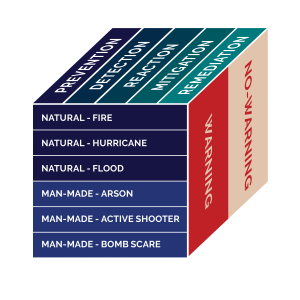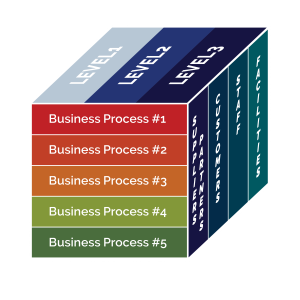
Ask a manager at most companies, public or private, if they have a Disaster Recovery plan and you might hear a response such as "Yes, our IT folks back up our servers on a regular basis." Another common response might be "Our business isn't big enough to need one of those? Besides we have insurance to cover our losses." These and many others like them are bad answers. Many disasters that affect your business have nothing to do with Information Technology. It may be a fire or a flood that makes your main classroom building inaccessible. It may not even be your disaster. A crisis effecting one of your main suppliers or customers may have a great impact on you. As for insurance, that only provides money and it often does not arrive in time to guarantee that you will be able to continue in business. One of the goals of this series of articles is to address many of the myths and misunderstandings regarding the need, development and implementation of disaster recovery (DR) / continuity of operations (COOP) plans. What is the difference between DR and COOP? Why have a plan and how do I go about preparing one? Whose responsibility is it to develop the plan? Who owns the plan? How is it maintained? How is it tested? These are not easy questions to answer, and many people make a career out of helping their companies or their clients answer them. Another goal of these articles is to provide System and college management with an understanding and appreciation of the value of spending the time, effort and, yes, a certain amount of money to have a viable plan that enables the college to face the challanges presented by a disaster. Each article will focus on an aspect of either the DR Cube shown in Figure 1 or the COOP Cube in Figure 2 below.

DR Cube
 COOP Cube
COOP CubeLet's get started.
What exactly is Disaster Recovery and Continuity of Operations?
We should begin at the beginning, with a basic definition of these two terms. What is DR? What is COOP? Are they two terms for the same thing? As the two figures above indicate, they are two distinctive processes. If we address DR first, perhaps we should define a disaster. In the preface of their book The Northridge Earthquake: Vulnerability and Disaster, Bolin and Stanford state that "Disasters occur at the interface of vulnerable people and hazardous environments." Hazardous environments or events are variously categorized as natural or man-made, internal to an organization or external, intentional or unintentional, sudden or with advanced notice. However classified, when such an event occurs in the vicinity of vulnerable people it becomes a disaster and can cause loss of life or property and typically leaves some economic damage in its wake. DR then is the system of policies and procedures established to allow the college to respond to the occurrence of a disaster and the DR Plan is the document that codifies the duties and responsibilities of those tasked with the college's response. DR typically involves five steps, as shown in Figure 1 above:
- Prevention
- Detection
- Reaction
- Mitigation
- Remediation
In subsequent articles, we will discuss these steps in detail. COOP is defined by FEMA's National Continuity Policy Implementation Plan as the "effort within individual executive departments and agencies to ensure that Primary Mission Essential Functions (PMEFs) continue to be performed during a wide range of emergencies." While this definition was originally developed and applied to agencies of the federal government, it can be applied equally well to our colleges. The LCTCS exists for a reason. Our colleges exist for a reason. On October 8, 2014, the LCTCS Board of Supervisors adopted Our Louisiana 2020: Building the Workforce of Tomorrow, in which our colleges committed to six ambitious goals they will accomplish by the year 2020. Each college is a vital participant in this plan and the loss of any one would have a serious impact on the ability of the System to reach its goals. The principles of COOP ensure that in the event of the unthinkable the mission continues. The COOP Plan is the roadmap for the implementation and management of all COOP processes. Following from the above definition of COOP, each college must undertake to identify its PMEFs. This is done by conducting a Business Impact Analysis (BIA) of its business processes as they are impacted by the potential loss of resources. Regardless of the cause (fire, flood, bomb threat, etc.), a disaster results in a measure of loss to one of the following resources: facilities, staff, customers, suppliers or partners. Determining the impact of such loss to your college is the goal of a BIA. Information from the BIA can then be used to develop specific plans for the continuation of the PMEF under the pressures of a particular level of crisis event. In our next article in this series, I'll take a look at the top slice of the DR Cube - Prevention. It sounds pretty intuitive, but for that very reason many people take it for granted, not giving it the attention that it deserves. Bolin, Robert, with Lois Stanford. 1998. The Northridge Earthquake: Vulnerability and Disaster. London and NY: Routledge.
